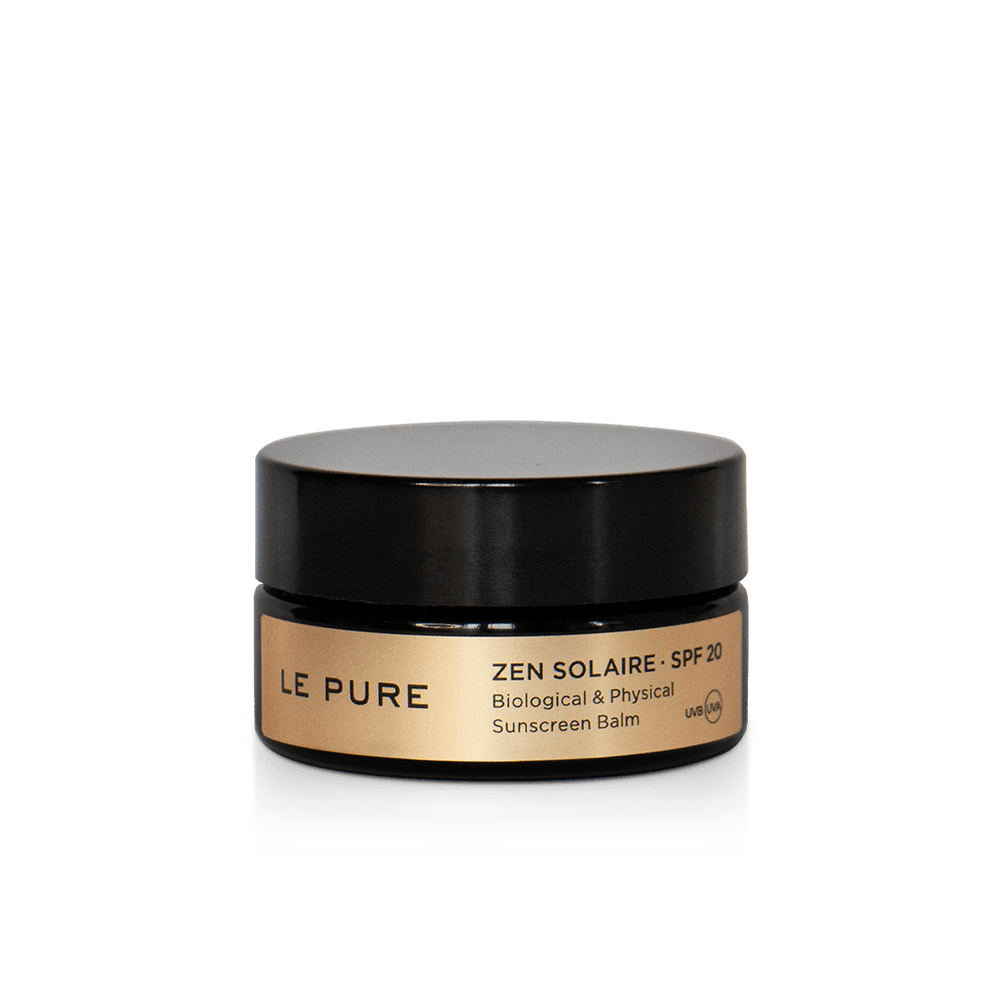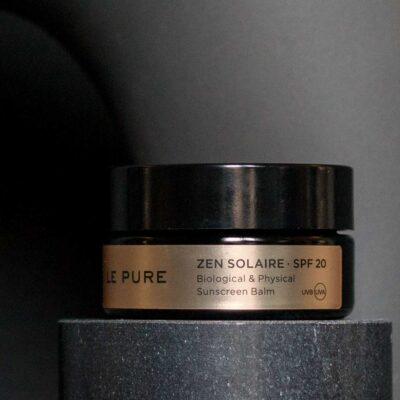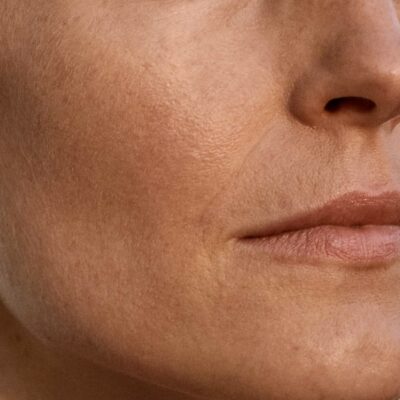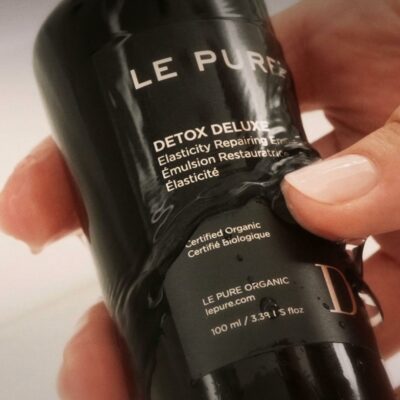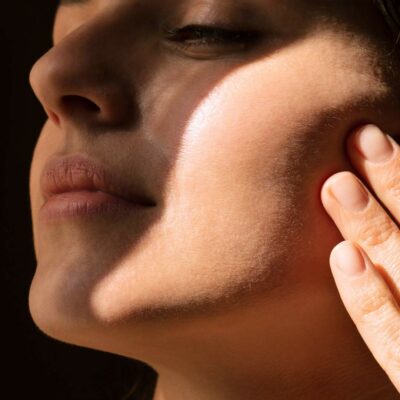Treatment for Hyperpigmentation
Hyperpigmentation is a common skin issue, where darkened spots or patches appear on the skin. There are different types of pigmentation spots including age spots, sun spots, post-inflammatory hyperpigmentation, and melasma. An effective treatment for hyperpigmentation addresses the internal causes, combined with a skincare routine that respects the natural functions and cycles of the skin.
Products for Hyperpigmentation
Hyperpigmentation Skincare Routine
Morning Routine Hyperpigmentation
Cleanse the skin with Alpha Tonic. Apply Way to Radiance and massage it into the moist skin.
Night Routine Hyperpigmentation
Apply Alpha Tonic on a cotton pad moistened with water and gently cleanse with spiral movements. Spray Nectar Immortel onto the face and gently massage 1 dose of Midnight Rejuvenation into the damp skin.
Weekly Routine Hyperpigmentation
2-3 times per week, after cleansing, apply the gentle exfoliation and natural retinol treatment True Revelation.
Three times per week, as the last step of the night routine and before going to bed, apply a thin layer of Instant Liberation like a cream and let it act overnight.
Sun Protection
Apply Zen Solaire daily on the areas with hyperpigmentation. If the UV index is low, you can apply the makeup cream Perfecting Illumination to protect the rest of the face. If the UV index is high and you are outside, apply Zen Solaire on the entire face and use a sun hat. If you are planning on staying outside, reapply every 1-2 hours.
Zen Solaire permits the synthesis of vitamin D by the skin, which is essential for the correct functioning of the melanocytic cells and the regulation of skin pigmentation. It has the highest content (88%) of photoprotective plants that boost the skin’s defense mechanisms and assure adequate UV protection and even pigmentation.
Remember that prolonged sun exposure during high UV index periods always harms the skin, no matter which sunscreen you apply. Gradual sun exposure and a sun hat are key in preventing sun damage and hyperpigmentation.
The Different Types of Hyperpigmentation
Pigmentation is a natural self-defense mechanism of the skin, and it appears when the skin is exposed to UV-rays, trauma or inflammation. There are different types of hyperpigmentation that can appear on the skin. Pigment spots can appear at any age, but the causes may be different at 20 years of age, 30, 40, 50, 60, etc.
The causes of uneven pigmentation may be internal as well as external, and very often there is more than one cause involved. Serious illnesses (skin related or not) can also cause pigmentation spots. Hyperpigmentation is more common in people with darker complexions, as their skin contains more melanocytes, resulting in darker spots.
Uneven skin pigmentation can be classified into the following basic categories:
- Freckles: This harmless type of pigmentation spots can be inherited or develop over time without new melanocyte formation. Their appearance can vary depending on the season and is sometimes influenced by the person’s nutrition.
- Melasma/Chloasma: Melasma or chloasma is a hormonal type of hyperpigmentation and occurs due to excessive melanin production during pregnancy, while taking hormonal contraceptives, or during menopause. These spots can disappear after pregnancy, after discontinuing contraceptive medication and if the hormones are in balance again.
- Sun spots: Sun spots (lentigines solares) are caused by prolonged exposure to UV rays and can be prevented by a combination of progressive sunbathing and biological sun protection.
- Aging spots: Age spots, also known as lentigines seniles, are typically seen in people over 40. They can appear after many years of prolonged and excessive sun exposure. Another factor is that with age, there are fewer melanocytes in the skin, causing the remaining ones to enlarge and spread unevenly on the face, décolleté, and hands.
- Postinflammatory hyperpigmentation: This type of temporary pigmentation is caused by an excess production of melanin, which is part of the skin’s natural response to inflammation. After a wound or a pimple heals, an area of darker skin can remain, which usually goes away on its own, but the process can take up to 2 years.
There are also pigmentation disorders that involve the absence of melanin in the skin, which is called hypopigmentation.
What Causes Hyperpigmentation?
1. Age and Hyperpigmentation
Cells divide a lot faster at 20 years old than they do at 70 years old. So treating pigmentation spots will be easier and faster at a younger age. With increasing age we can stimulate cell renewal with a gentle peeling such as True Revelation. Age spots often occur after 40 years old, but sometimes even earlier. They can be caused by an overexposure of sun during the previous decades, but very often there are also many other factors involved.
2. Hormones and Pigmentation Spots
In many cases, hormones and hyperpigmentation are closely related. Hormonal imbalance can cause an excess of estrogen in women, which can result in pigmentation spots in connection with sun exposure. If the equilibrium between estrogen and progesterone is disrupted, the skin is more prone to produce darker spots. Changes in hormone levels, as experienced during pregnancy, menopause, or the intake of oral contraceptives, can stimulate an increase in melanin production, leading to the appearance of dark spots and even dark patches (melasma).
3. Phototype and Hyperpigmentation
The latitude of the place of residence determines the strength of the sun and the sun hours in a year. People in places with stronger sun usually have darker complexions. Their skin contains more melanocytes, therefore hyperpigmentation is more frequent in darker phototypes.
Due to globalization and change in lifestyle, we see many exceptions today. Some people with fair skin now also live in Southern countries, which provides them with an excess of sun exposure for their skin type, while people with darker skin live in Northern countries, which puts them at higher risk for vitamin D deficiency.
4. Sun Exposure and Pigmentation Spots
The strength of sun radiation and the duration of sun exposure strongly influence the skin’s melanin production. Melanocytes function best when consistently active.
A lack of periodic sun exposure can lead to malfunctioning melanocytes and a deficiency in vitamin D. Therefore, a high SPF sunscreen is not the solution to avoid pigmentation spots, and overprotecting your skin can actually be one of the causes of hyperpigmentation.
There isn’t a universal recommendation on the ideal amount of sun exposure and each person must find their own equilibrium regarding sun exposure, considering factors like UV index, skin color, hormones, medication, nutrition, and more.
It’s generally preferable to expose the skin for short durations daily, rather than extended exposure on weekends or holidays. Creating your own sun protection strategy is crucial to enjoy the sun and prevent hyperpigmentation.
5. Vitamin D Deficiency and Hyperpigmentation
The human body depends on sunlight for its survival. Therefore, the color of the human skin has adapted to the amount of sun exposure available. The original skin color of the first humans in Africa was dark in order to protect the skin from the sun for many hours. Therefore, it takes darker skin 4 times longer to synthesize the same amount of Vitamin D than a person with lighter skin.
Due to changes in our living conditions, many people spend their days indoors, which puts them at high risk of vitamin D deficiency. Applying high SPF sunscreen all year round also reduces the amount of vitamin D synthesized by the skin. The skin needs vitamin D synthesized from UVB radiation to work properly and to assure even skin pigmentation. While vitamin D supplements are important in many cases, they can’t compensate for a vitamin D deficiency of the skin and the increased risk of developing hyperpigmentation.
We need to work with the natural organ function of the skin and not against it. Neither too much nor too little sun exposure is good for the skin. In order for the skin to work properly and assure even pigmentation, each person needs to discover the ideal balance of sun exposure and protection for their skin.
6. Sunscreen and Pigmentation Spots
Sun protection creams are sold as the perfect solution to preserve youthful skin and prevent hyperpigmentation. Unfortunately, our bodies and its relationship with the sun is a lot more complex than that.
Chemical sunscreen filters can offer a high protection, but the substances in these products are very similar to estrogens, which in turn can cause pigmentation spots. Daily application of chemical sunscreen can protect the skin from sunburn, but cause hyperpigmentation in the long run.
Physical or mineral sunscreen filters work with naturally occurring minerals (Zinc Oxide and Titanium Dioxide) to reflect the sun. They are the better alternative as they do not interfere with the hormonal system. The drawback of these physical filters is that they include either synthetic or hydrogenated fats or waxes. These substances create a sealing layer on the surface, which suffocates the skin and can also contribute to hyperpigmentation.
Biological sunscreen together with a small amount of physical sunscreen is the ideal option to protect and strengthen the skin. Together with clothing and a sun hat, this type of sunscreen provides healthy sun protection that allows vitamin D synthesis.
7. Skincare and Hyperpigmentation
When it comes to skincare products we need to nourish the skin with elements that it recognizes and that improve the function of the melanocyte cells. Plants that are naturally rich in beta-carotene naturally strengthen the skin and increase its self-protection.
Skin renewal helps to prevent hyperpigmentation. A gentle exfoliation together with medicinal plant nutrients that naturally contain vitamin A (bio retinol) stimulate cell renewal, while preparing the skin for sun exposure.
Synthetic retinol or acid peelings on the other hand sensitize the skin and increase the risk of hyperpigmentation when exposed to the sun. Our experience has shown us that we achieve better results, if we work with the skin’s natural functions as opposed to working against them.
We recommend using skincare products without chemically modified and synthetic ingredients as some of the substances are similar to estrogenic hormones and can cause pigmentation spots on the areas, where they remain on the skin surface. Many synthetic preservatives such as parabens are an example of such substances.
8. Skin Cleansing and Pigmentation Spots
Skin Cleansing is crucial when it comes to preventing and treating pigmentation spots. Conventional cleansers contain syndets (synthetic detergents) and if some of these particles are left on the skin, they can cause a magnifying glass effect when the skin is exposed to the sun. This increases the sun radiation and can cause pigmentation spots as a consequence.
The skin needs to be cleansed gently with a natural cleansing product that does not leave residues on the skin surface. Excessive friction during cleansing should be avoided, as this causes skin trauma and eventually hyperpigmentation.
We have developed an Antiaging Face Cleansing Ritual, called the Wave Cleansing Ritual, that profoundly cleanses and purifies the skin. This 2-minute ritual strengthens your hydrolipidic film and prevents the overstimulation of the melanocyte cells.
9. Aesthetic treatment for pigmentation spots
Before undergoing a cosmetic procedure we recommend determining the causes of your hyperpigmentation. Topical medication, chemical peels, and laser treatment can irritate the skin and cause post-inflammatory hyperpigmentation, which makes your skin even more fragile.
Your doctor, dermatologist or esthetician should take your entire body into account, when finding a solution to your pigmentation problem. Harsh treatments can bring short-term results, but may weaken your skin in the process and worsen your hyperpigmentation over time. We recommend a holistic approach with a doctor specializing in integrative medicine to achieve a satisfactory and long-term solution.
10. Nutrition and Dark Spots
We nourish our skin from the outside but also from the inside, therefore the food we eat also has a big impact on our skin. Breakfast is particularly important, and we should avoid any type of sugar and juices in the morning as they can cause or aggravate the appearance of freckles and hyperpigmentation.
A deficit in aminoacids can lead to the appearance of pigmentation spots on the skin. The pancreas has an important influence on our blood sugar, but also on the pigmentation of our skin. An excess of coffee burdens the kidneys, causing a grayish, less homogenous complexion.
11. Liver and Hyperpigmentation
Organs that don’t function correctly can also cause uneven pigmentation. The liver and hyperpigmentation can be connected, as this organ’s function is to detox our body.
Overloading the liver with toxins or unbalanced nutrition can contribute or aggravate the appearance of dark spots on the skin.
12. Kidneys and Pigmentation Spots
The kidneys are also responsible for eliminating toxins of the body. Overburdened kidneys can also be a cause of pigmentation spots.
There are maps of the body’s meridians that run through the face, and each one corresponds to different organs and systems. A pigmentation spot in a particular area could give us a hint that there is a problem, for example with the stomach or the gallbladder.
13. Medication and Dark Spots on the Skin
The skin can develop phototoxicity due to the exposure to certain substances: internal exposure from medication and/or external from cosmetic products.
Medication and Dark Spots on the Skin are frequently related. Pigmentation spots can appear after being exposed to the substance and sun radiation at the same time. Medication that can cause phototoxicity include oral contraceptives, antibiotics, antidepressants, psychiatric drugs, antianxiety drugs, anti-inflammatory medication, dietary drugs, and many more. Long-term effects of medication treating cholesterol, diabetes, blood pressure and heart disease can also leave side effects leading to uneven pigmentation.
14. Pimple Squeezing and Hyperpigmentation
The skin is the perfect protection system of the body. It is designed to keep detrimental microbes out of our organism and to protect us from trauma. Any minor lesion will be repaired instantly by producing keratin.
Depending on genetic factors, the skin will produce more or less keratin, which is a substance that also contains color pigments. Very often we produce small lesions by scratching the skin without noticing or by actively squeezing pimples and impurities.
Another cause can be post-inflammatory hyperpigmentation following skin injuries or inflammation. The summer sun may seem to dry out acneic skin, but unless we address the underlying causes of acne, the inflammation will be back with a vengeance after the summer period.
15. Dark Spots caused by Detergents and Perfumes
Many substances end up on our skin without us being aware of it. Dark spots are often caused by detergents and perfumes that remain on our skin during sun exposure. Particles of detergents and fabric softeners used for washing clothes and bedsheets can rub off on the skin.
Switch to a natural detergent and avoid fabric softeners, especially for the pillow cases. When applying synthetic perfumes, avoid spraying them on parts of the skin that are exposed to the sun.
Finding the underlying causes of hyperpigmentation can be complex, but a successful, long-lasting treatment for hyperpigmentation requires a thorough analysis to treat and prevent dark spots on the skin.







